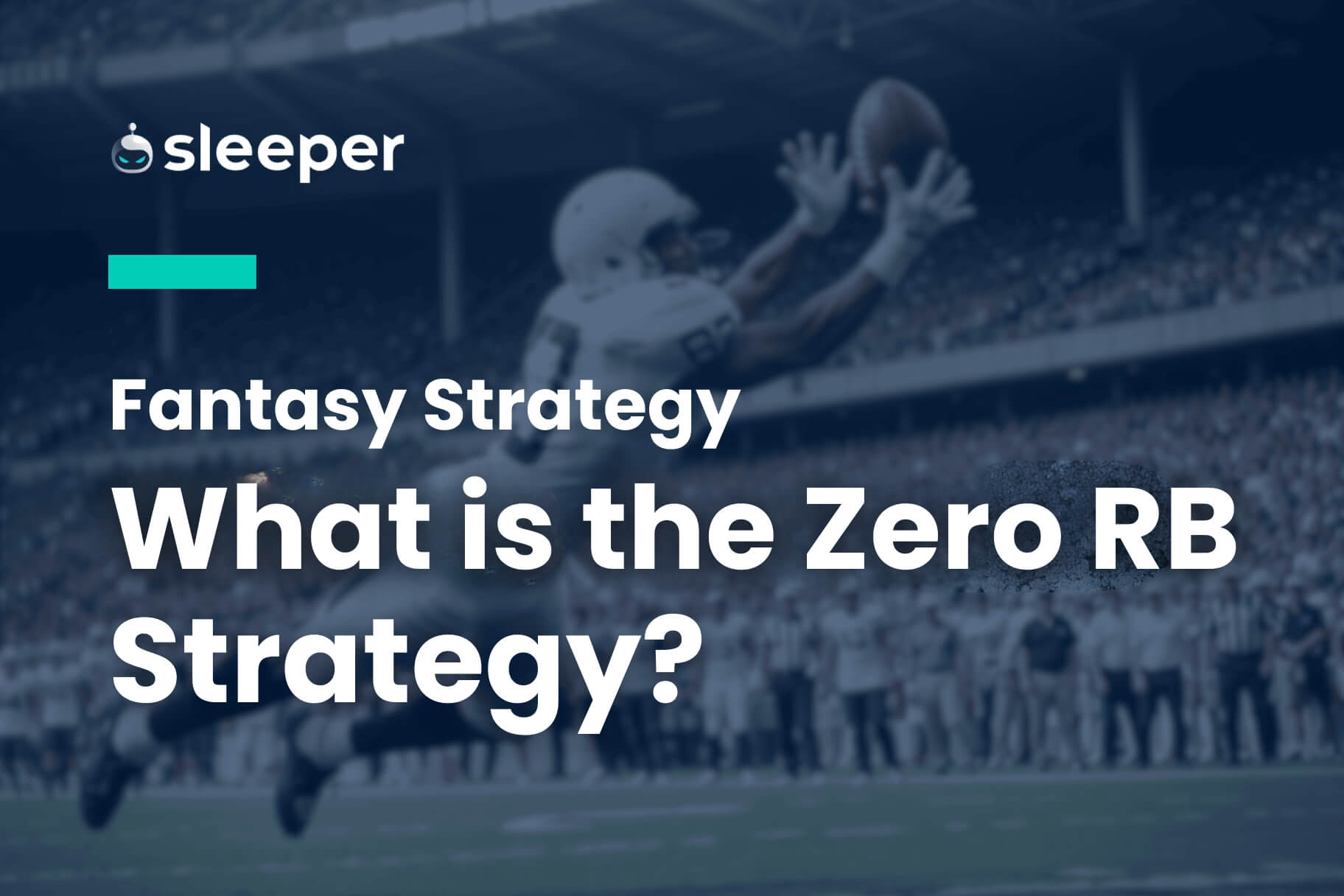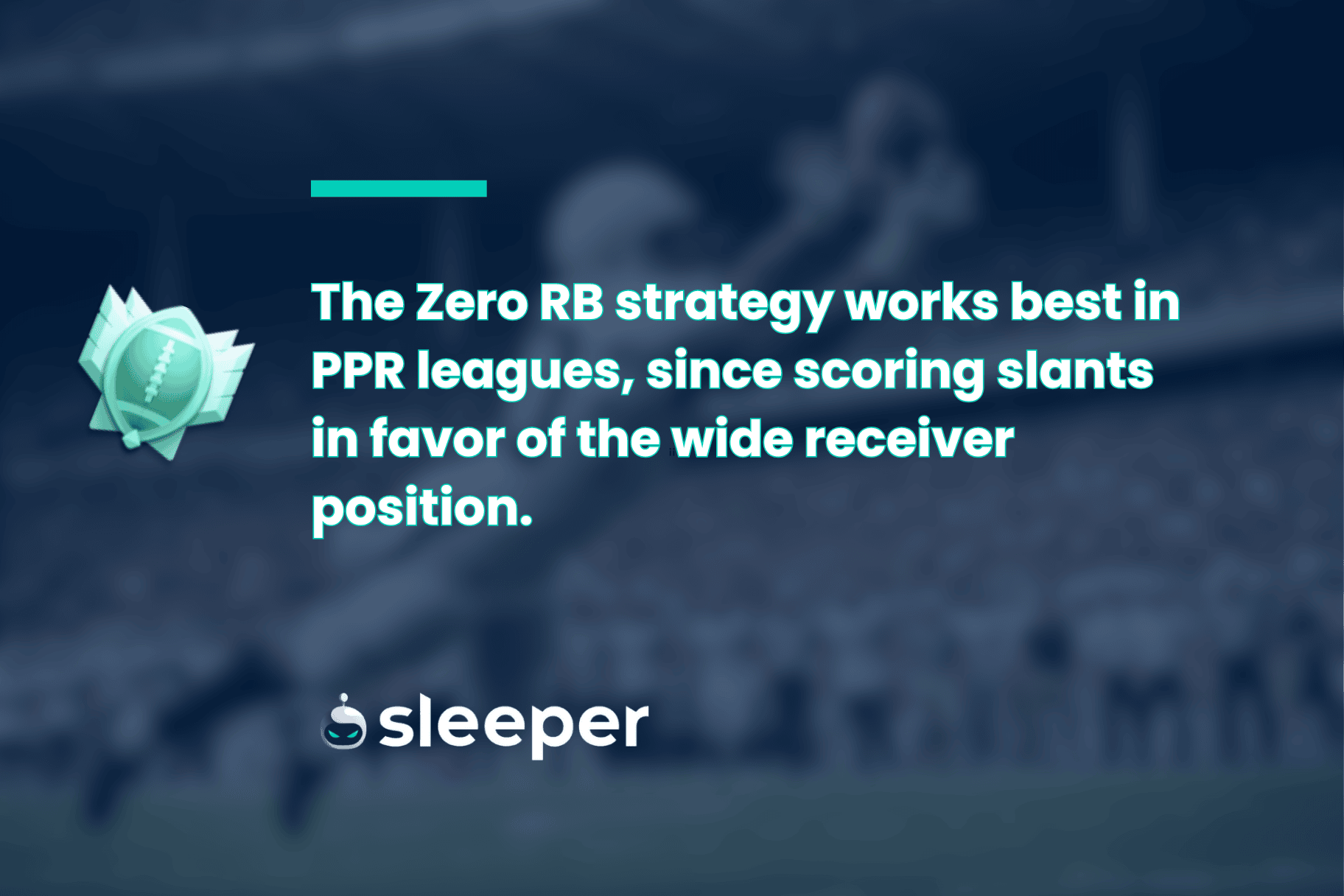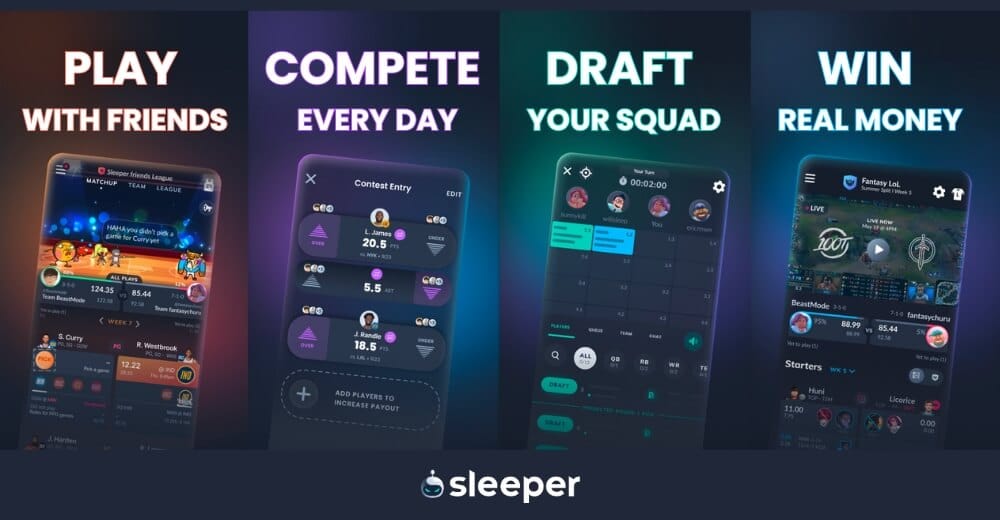Zero RB is a fantasy football strategy that emphasizes passing on early, elite running backs in the draft and instead stocking up on depth at other skill positions.

Zero RB is a daring draft strategy with strong recent success, which has only increased its popularity and the lore surrounding it. Despite this, some fantasy managers avoid the strategy entirely, or even misinterpret how to execute it properly.
This article details the Zero RB strategy and its history, along with actionable tips to help you implement it in your upcoming fantasy football drafts.
What Is the Zero RB Strategy?
The Zero RB strategy, rather unsurprisingly, revolves around selecting zero running backs early in your fantasy football draft. First penned by Shawn Siegele in 2013, the Zero RB strategy prioritizes the other positions in a fantasy football draft, since the running back position is chaotic and unpredictable in-season.
Zero RB drafters will load up on wide receivers and an elite quarterback early before turning their attention to backup running backs or players on ambiguous running back depth charts. As the fantasy season moves along, a Zero RB drafter will aim to continuously upgrade the running back slots, while reaping the benefits of having the strongest collection of wide receivers in their fantasy league.
Does the Zero RB Strategy Work?
The Zero RB strategy has been deployed successfully across many formats, but like all strategies, it comes with its own collection of benefits and drawbacks.
Pro: Reduce Injury Risk
The running back position is affected by more injuries during the NFL season than the wide receiver and quarterback positions. So, by selecting wide receivers and quarterbacks early in fantasy drafts, rather than running backs, there is a lower chance your early-round picks will miss a significant number of games from injury.
When injuries do hit, backup running backs become fantasy relevant at a higher rate than backup wide receivers. Zamir White rattled off four straight fantasy RB2-or-better performances to close out 2023 when Josh Jacobs suffered a quad injury – one of many examples from that season.
Pro: Take Advantage of Ambiguous Situations
Ambiguous situations are ones where fantasy managers are scared to take a stand due to backfield uncertainty.
A great example of this is the Miami Dolphins in 2023, since there was not a clear starter before the season began. Those drafting running backs early were often pivoting to wide receivers in the mid-late rounds where De’Von Achane (2023 Sleeper ADP 124) and Raheem Mostert (ADP 130) were going in drafts. Both Achane and Mostert finished top-four in fantasy points per game at the position last year.
Pro: Benefit From Shifting Coaching Preferences
Coaches are more likely to switch starters at the running back position than at wide receiver. Two good examples from 2023 are the Texans and Panthers. Dameon Pierce (ADP 47) and Miles Sanders (ADP 52) lost their starting running back jobs to Devin Singletary (ADP 171) and Chuba Hubbard (ADP 198), respectively. Zero RB drafters benefit from these – often surprising – coaching tendencies.
Pro: Capitalize on WR Performance
Wide receivers are generally more efficiently drafted by ADP than running backs. In simple terms, early- and middle-round receivers are more likely to finish toward the top of their position in total fantasy points and per-game fantasy points than early- and middle-round running backs. By stockpiling wide receivers early in your draft, you’re focusing your capital on a position that’s more reliable.
Pro: Team Gets Stronger Each Week
All the money and pride is won in the fantasy playoffs, so the final weeks of the fantasy season are the most important. The Zero RB strategy aims to begin the season with a strong core at wide receiver, along with a top-flight fantasy starter at quarterback and tight end.
As the weeks go by, successful Zero RB teams continue to benefit from chaos at the running back position, finishing the year with their strongest RB core of the season.
Con: Depending on Trades for RB Production
Zero RB doesn’t always result in running back fantasy points. Popular Zero RB targets from 2023 included Rashaad Penny, Elijah Mitchell and Tank Bigsby. Zero RB drafters will often struggle to find two viable fantasy starters at running back, especially early in the season. It can be difficult to make up ground in the fantasy standings after stringing together a series of early losses.
Con: Harder to Hoard WR Talent
In the early days of Zero RB, those executing the strategy were often drafting against teams that were loading up on the running back position. This allowed Zero RB drafters to often gather four top-12 fantasy options at the wide receiver position. Now, with more fantasy enthusiasts trying out the Zero RB approach, it can be more difficult to build a deep stable of fantasy wide receivers.
Con: Miss out on Game-Breaking RBs
Running back seasons with a game-breaking amount of fantasy points almost always come from early-round backs. In 2023, Zero RB drafters were spoiled with Kyren Williams, Mostert and Achane.
While that type of success from late-round running backs is rare, Zero RB managers still struggled to keep pace with Christian McCaffrey, who scored 100 more fantasy points than any other running back. The truly difference-making 20-fantasy-point-per-game seasons generally require using an early pick on a running back.

When to Use the Zero RB Draft Strategy?
The Zero RB strategy works best in PPR leagues, since scoring slants in favor of the wide receiver position. Tight ends and running backs catch fewer passes and will usually have a smaller portion of their total fantasy points come from receptions. Additionally, pass-catching running backs can often be found later in drafts, and they fit in well to Zero RB builds. Jaylen Warren (61 receptions) and Tyjae Spears (52) were two good Zero RB targets in 2023.
Zero RB in a standard scoring fantasy league is not recommended because wide receiver scoring is severely depressed and pass-catching running backs have minimal fantasy value. Superflex leagues, where the quarterback position needs to be prioritized, are also ripe for the Zero RB strategy, assuming it’s not a standard scoring league. Because the waiver wire needs to be utilized efficiently early in the season with Zero RB builds, it’s not a suggested strategy for your very first fantasy football league.

How to Implement the Zero RB Strategy? 6 Tips
Don’t Select an RB Before Round…
This one really depends on your starting roster spots.
To properly execute the Zero RB strategy, you should fill out your other starting spots before turning to the running back position.
So, in a PPR league where you start 1 QB, 2 RBs, 2 WRs, 1 TE and 1 FLEX, you should draft at least three wide receivers (starting spots plus flex), a quarterback and tight end before turning to the running backs. In this instance, you wouldn't consider drafting running backs until the sixth round or later.
Draft Elite WRs Early
Wide receivers are the bread and butter of Zero RB fantasy rosters. Outside of superflex leagues, you shouldn’t be considering quarterbacks until the fourth round or later, so make sure to draft those wide receivers early.
Draft an Elite QB
Because we know we’re going to struggle at the running back position to begin the year, we want all our other positions to be particularly strong at scoring fantasy points. Aim to secure a top-five fantasy quarterback by the sixth or seventh round when going Zero RB.
Target a Top-5 Fantasy TE
Like with the quarterback position, we want our non-running back starting slots to be lethal early and often during the fantasy season. Tight ends score fewer fantasy points than quarterbacks, and it’s slightly more likely you’ll find a solid fantasy contributor late. Because of that, we’re putting more emphasis on the elite fantasy quarterback.
Prioritize Quantity Over Quality at RB
You should leave your Zero RB draft with at least five running backs, though six or seven is preferred in deeper leagues or leagues that don’t draft a kicker or team defense. You’re unlikely to hit on all your picks in a fantasy draft, so we don’t want to get cocky and only draft two or three running backs, assuming we already found this upcoming season’s late-round darling.
Draft Different Types of RBs
This one takes a lot of practice because it requires reading different backfield situations and understanding depth charts.
Ideally, you’ll draft a mix of direct backups (handcuffs) that need an injury to succeed, running backs from ambiguous backfields and running backs more likely to capitalize on shifting coaching preferences.
While handcuff backs often carry the most upside, they have the hardest time scoring fantasy points early on for your team, so it’s key to mix and match to get your Zero RB team through the early, middle and final stretch of the fantasy season.
Frequently Asked Questions
Does the Zero RB strategy work in a superflex league?
The Zero RB strategy can be successfully deployed in superflex leagues, where the emphasis early should be on the QB and WR positions. Many successful superflex PPR drafts begin with two quarterbacks and three wide receivers, setting up a Zero RB build.
Who invented the Zero RB strategy?
In 2013, the Zero RB strategy was first outlined by Shawn Siegele for the fantasy football site RotoViz.
How many RBs should I draft when going Zero RB?
Five to seven RBs is optimal for a Zero RB build, though this will depend slightly on how many rounds the draft is. Fewer than five drafted RBs in a Zero RB build will make it really difficult to take advantage of this strategy’s benefits.
Is there a type of league where I should not go Zero RB?
We generally advise against Zero RB builds in a standard scoring league. In this format, scoring tilts so heavily in favor of the running back position compared to wide receivers, once fantasy points per reception are removed.
Put Zero RB Strategy to the Test
You’ve learned the strategy, its history and easy steps to execute it. Now, it’s time to put Zero RB into practice by joining a fantasy league on Sleeper by signing up on the website or downloading the app. You can also practice it by taking part in mock drafts before implementing it in the real deal.
As you’re mastering Zero RB, make sure to check out Sleeper Picks, an emerging DFS platform. Simply choose more or less for players’ projected stats totals for any week during the NFL season, with a chance to win real money in the process.




